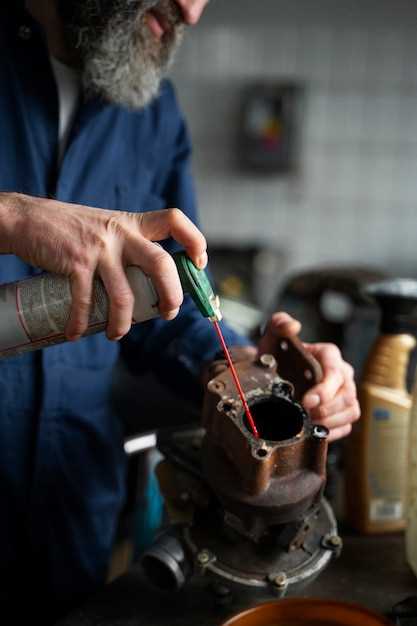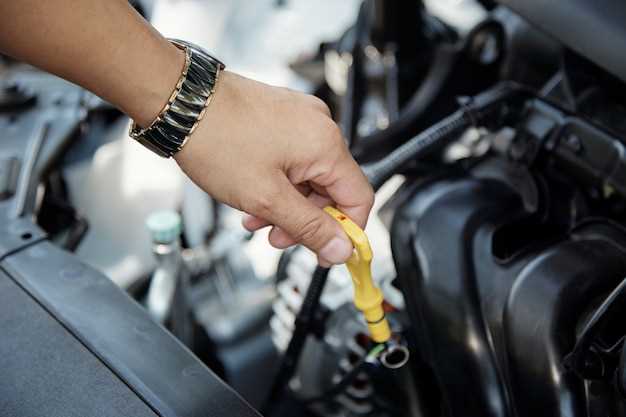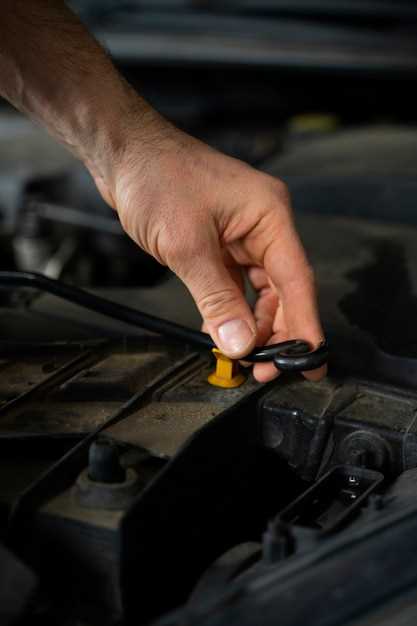

Diesel engines rely on a series of components to ensure smooth starting, particularly in cold weather conditions. One of the essential elements in this system is the glow plug relay, which plays a critical role in powering the glow plugs. These plugs heat the combustion chamber to facilitate the ignition of diesel fuel, making them crucial for effective starting.
When the glow plug relay fails, the glow plugs may not receive the necessary voltage, leading to poor engine performance or, in some cases, failure to start altogether. Understanding the function of each component and recognizing the symptoms of a malfunctioning relay are vital for any diesel owner. In this guide, we will walk you through the process of replacing the glow plug relay, ensuring your diesel engine starts reliably and efficiently.
Before embarking on the replacement, it’s important to familiarize yourself with the tools required and the specific steps involved in this maintenance task. By following this guide, you will gain the knowledge needed to effectively address glow plug relay issues, restoring the starting performance of your diesel engine.
Identifying Symptoms of a Faulty Glow Plug Relay

A glow plug relay is essential in the starting process of a diesel engine. When this relay malfunctions, it leads to various issues that can significantly affect the performance and reliability of the vehicle. Recognizing the symptoms early can prevent further damage to the engine and ensure a smoother starting experience.
One of the primary indicators of a faulty glow plug relay is hard starting, especially in cold weather conditions. If the relay fails to provide power to the glow plugs, they won’t heat up, resulting in difficulty when trying to start the engine. You may notice extended cranking times, and the engine might stutter or fail to start altogether.
Another symptom is the presence of a dashboard warning light. Many vehicles equipped with diesel engines will have an indicator light that illuminates when the glow plug system is activated. If this light remains on or does not turn off after starting, it may signal a problem with the relay or the glow plugs themselves.
Additionally, you might experience inconsistent engine performance after starting. If the glow plug relay is faulty, it could lead to irregular heating of the plugs, causing rough idling or misfiring during initial operation. These symptoms can become more pronounced as the engine continues to run, resulting in poor acceleration and overall performance.
If you notice any of these symptoms–hard starting, persistent warning lights, or erratic engine behavior–it’s crucial to inspect the glow plug relay and associated components. Taking action sooner rather than later can save you from costly repairs and ensure your diesel engine runs efficiently.
Step-by-Step Procedure for Glow Plug Relay Replacement
Replacing a diesel glow plug relay is a vital maintenance task that ensures proper starting conditions for your engine during cold weather. Follow these detailed steps to successfully replace the relay.
Step 1: Gather Necessary Tools and Materials
You will need a ratchet set, socket wrench, multimeter, and a replacement glow plug relay. Ensure you have safety gloves and goggles as well.
Step 2: Locate the Glow Plug Relay
Open the hood of your vehicle and find the glow plug relay. It is typically located in the engine bay, near the battery or fuse box. Refer to your vehicle’s manual for the exact location.
Step 3: Disconnect the Battery
To prevent any electrical shorts or shocks, disconnect the negative battery terminal using a socket wrench. This step is crucial for safety while working with electrical components.
Step 4: Remove the Old Relay
Using your hands or a socket wrench, carefully remove the bolts or screws securing the glow plug relay in place. Disconnect the electrical connectors by pressing the release tab and pulling them away from the relay.
Step 5: Test the Relay (Optional)
If you are unsure whether the relay is defective, use a multimeter to test its continuity. Set the multimeter to the resistance setting and check the terminals. A reading of infinite resistance indicates a faulty relay.
Step 6: Install the New Glow Plug Relay
Take the new relay and connect it to the wiring harness. Ensure you hear a click as the connectors secure in place. Reattach any bolts or screws to firmly hold the relay in its position.
Step 7: Reconnect the Battery
Reconnect the negative battery terminal and tighten it securely. This step restores the electrical system to normal functionality after the replacement process.
Step 8: Test the Engine
Start your diesel engine to verify that the new glow plug relay is functioning correctly. Listen for the usual clicking sound of the glow plugs activating, which indicates that they are receiving power for optimal starting performance.
Step 9: Check for Issues
If the engine does not start or shows signs of struggle, double-check the connections and ensure the relay is properly installed. If problems persist, further diagnostics may be necessary.
By following these steps, you can effectively replace the glow plug relay, ensuring reliable starting of your diesel engine, especially in colder conditions.
Testing Diesel Engine Start Performance after Replacement

After replacing the glow plug relay in your diesel engine, it is essential to evaluate the starting performance to ensure that the repair was successful. A properly functioning glow plug system is critical for the effective ignition of diesel fuel, especially in cold weather conditions.
Begin by turning the ignition key to the ‘on’ position without starting the engine. This step allows the glow plugs to heat up. Listen for any clicks or sounds from the relay, indicating that it is engaging properly. If you hear a click, it’s a positive sign that the relay is functioning as intended.
Next, check the duration of the glow plug operation by observing the dashboard warning light. It should illuminate when heating and turn off after a few seconds, signaling that the plugs are ready for starting. If the light stays on longer than normal or does not turn off, it may indicate an issue with the relay or the glow plugs themselves.
To assess starting performance directly, attempt to start the engine. A well-functioning glow plug system will facilitate an easier start, particularly in lower temperatures. The engine should crank smoothly and start without excessive cranking or hesitation. If the diesel engine struggles to start or requires extended cranking time, further investigation into the glow plugs or the relay may be necessary.
Additionally, monitor the engine’s running behavior post-start. It should idle smoothly without misfiring or noticeable smoke. Any abnormal sounds or issues may signal that other components are affected or that there could be lingering problems related to the glow plug circuit.
In conclusion, thorough testing of your diesel engine’s starting performance after replacing the glow plug relay is crucial to verify successful operation. Ensure the glow plug system is completely functional to enjoy reliable starting and optimal engine performance.






